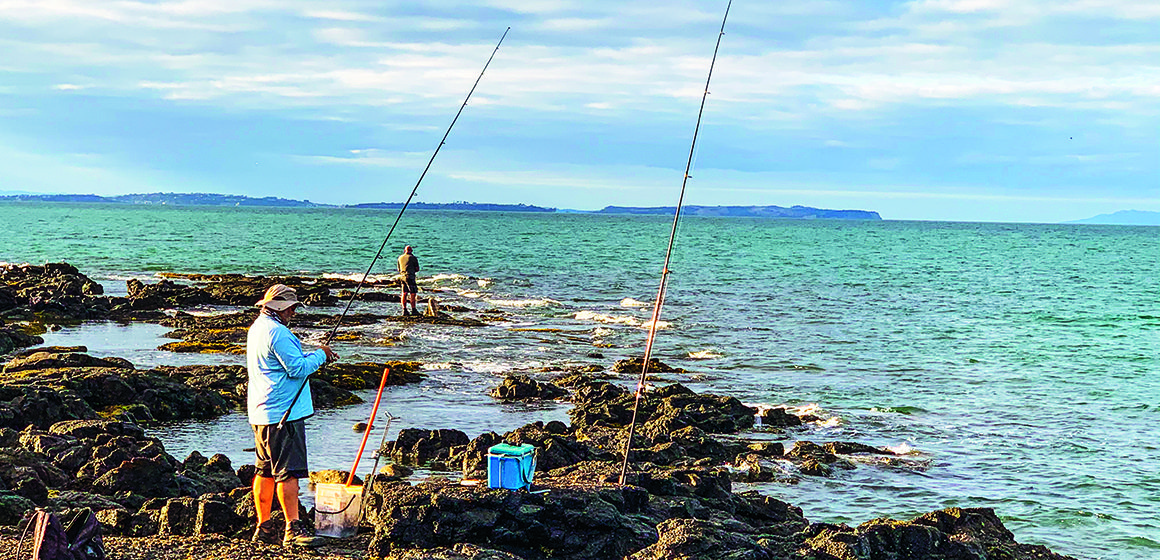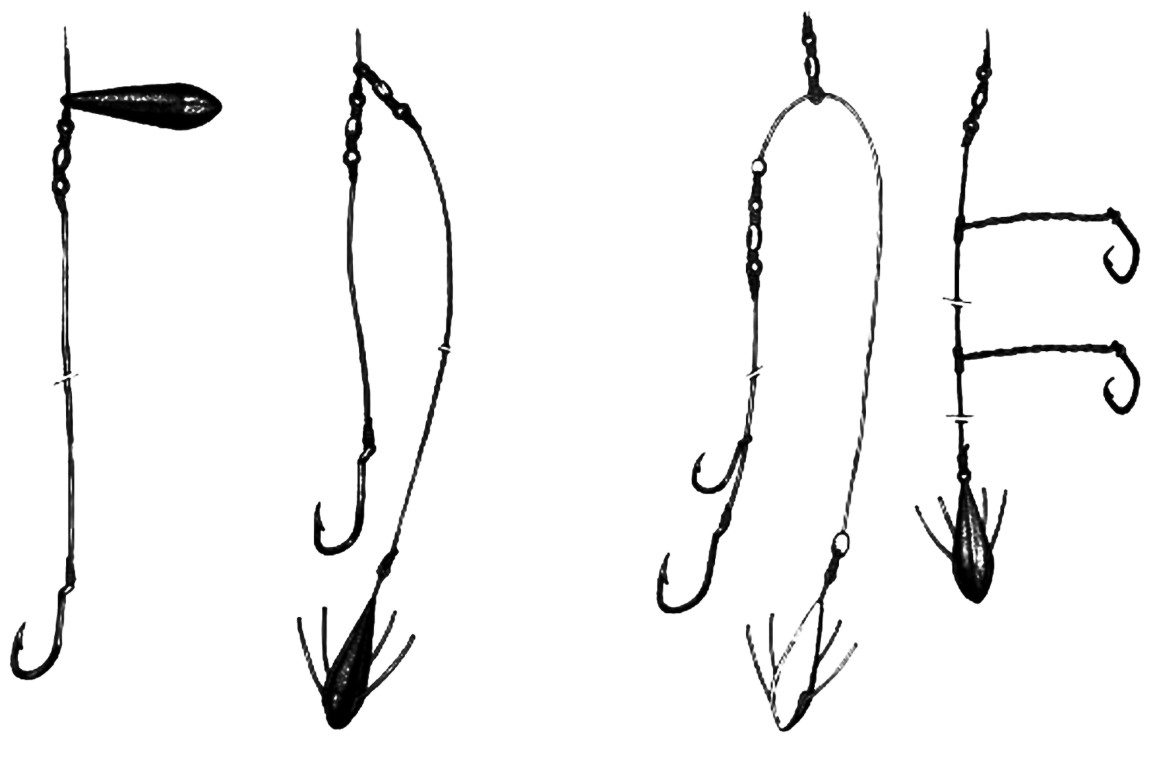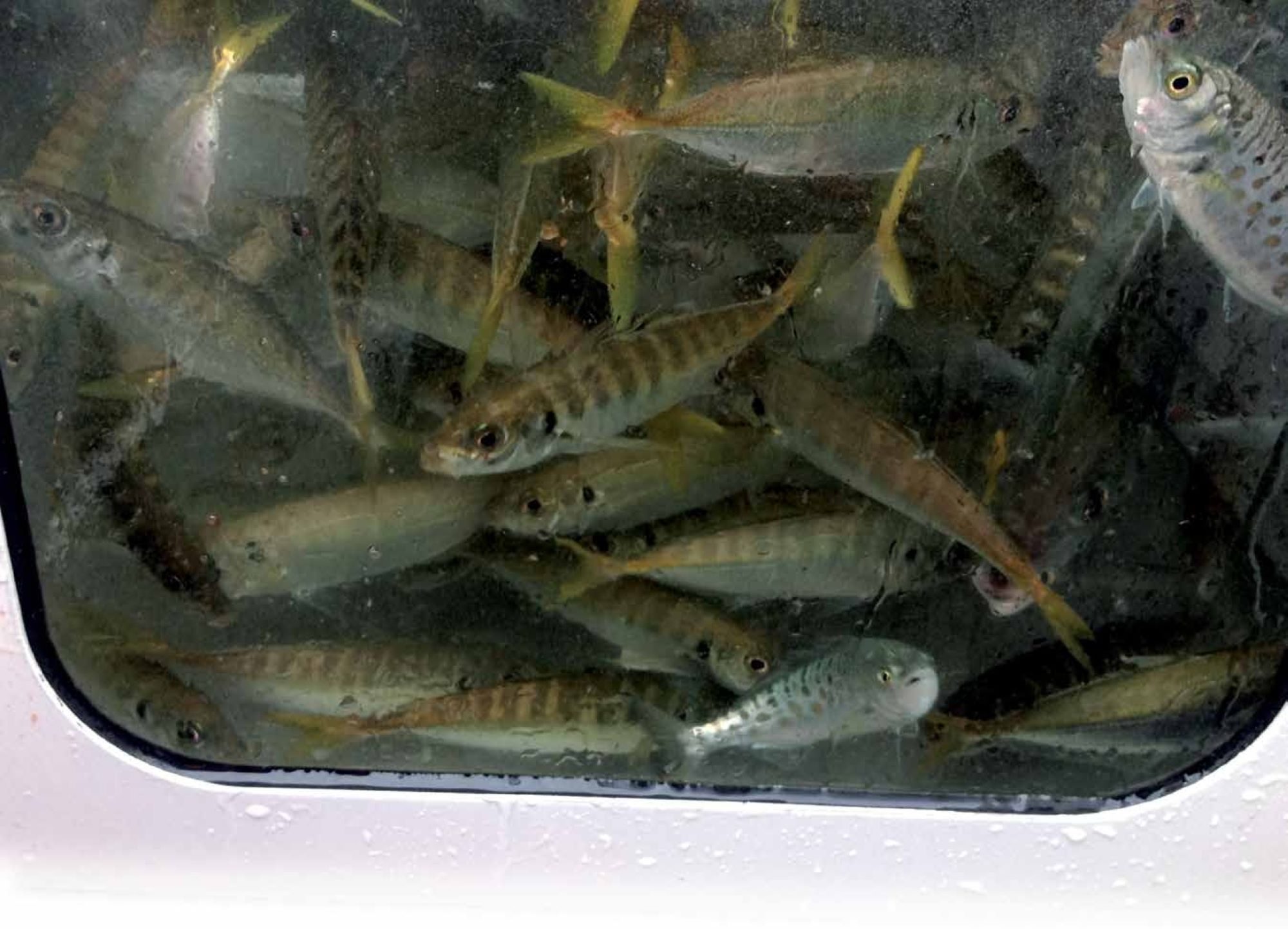

Boating restrictions during the Covid-19 epidemic left John Eichelsheim grounded and fish-less. Some lateral thinking was in order.
For the last several weeks, like everyone else, I haven’t been able to use my boat, and sadly, I sold my kayak last year to make room in the garage for my daughter’s first car. As I write, during COVID Level 3, kayak fishing within reasonable bounds is allowed, but not boating. So what’s a keen fisher to do? Well, how about shore fishing?
You can’t travel far, but many Kiwi fishers have easy local access to the water. Safe land-based fishing venues abound, including wharves, breakwaters, beaches and sheltered rocky shores. We anglers may have to lower our expectations slightly, but as I found recently, fishing from shore is a satisfying experience even when you don’t catch a whole lot.

I used to love shore fishing, but it’s been years since I last cast a long rod from the beach or rocks. So when my buddy Mark Kitteridge suggested we break the long, fish-less drought with a couple of hours fishing from rocks at the end of a North Shore beach, I jumped at the chance.
Getting my tackle together, however, proved to be a challenge. I used to have lots of land-based fishing gear, but not anymore. Fortunately, after much rummaging around, I found the only 13foot surfcasting rod I still possess, hidden away in the darkest corner of my garage, and an old spinning reel that I thought might serve.
The next challenge was finding line. I now use GSP braided line for all of my boat fishing, but nylon monofilament is a better choice fishing from shore. I managed to find a box of old monofilament spools under my workbench. They hadn’t seen the light of day in 20 years or more, I reckon, but the line on a half-empty 2400m bulk spool of 6kg Stren looked in good condition, so I wound 250 metres onto my old Shimano Spheros.
The next challenge was terminal tackle. A bit more rummaging produced a few swivels and a selection of recurved hooks in various sizes. I even found some high-tech, distance casting impact shields, clips and booms from back when I took surfcasting seriously. A stash of old breakaway sinkers in four and five-ounce weights was found hiding under a shelving unit. Perfect!

Given where we intended to fish, and the fact that long casts were of no great advantage, I didn’t really need to bother with clips and impact shields, but for old times’ sake I tied up a couple of pulley rigs using 30-pound nylon. They cast better than standard dropper rigs and I like the way they present the bait in the water. A pulley rig is generally only for one hook, but I figured one hook was enough.
I could have tied up a simple rig with one or two droppers above the sinker and a swivel at the top of the trace. That’s what Mark did, although he added a float to one dropper to keep the bait off the bottom and his top dropper was rigged with a soft plastic, not a natural bait. He’s like that – always looking for an edge! Mark was hedging his bets: even if the bait gets picked clean, the soft plastic could still turn a trick.
Both of us used breakaway sinkers. These torpedo-shaped sinkers fly through the air with minimum drag and the wire tines grip the bottom like a grapnel anchor. A vigorous tug on the line snaps the tines free to release the sinker when you need to retrieve the gear. They work well in a variety of applications, including shallow, rocky bottoms like we were fishing.
The upshot of our first land-based expedition was a very pleasant late afternoon/evening enjoying the fresh air and each other’s company while observing a safe two-metre separation. Getting back into the swing of casting the long rod without cracking off the terminal gear in my enthusiasm, and also finding the patience to leave the bait to soak long enough to get a bite, was quite therapeutic. We were fishing!
As it turned out, the results that evening were unremarkable to say the least: an undersize snapper for me, which I threw back, and a few bites between us that didn’t result in hook-ups. A bit further along, however, we watched an angler hook and land a nice snapper of around two kilos, while the guy two away from us (there were lots of locals fishing that night) caught and released a large eagle ray, so the evening session wasn’t without interest.
With the prospect of at least two more weeks of Level 3, we left that evening resolved to try shore fishing again as soon as possible.
WHAT YOU NEED
In reality you don’t need a whole lot of specialist gear for a bit of casual shore fishing, especially urban fishing like we enjoyed. A long rod helps, but for wharf or jetty fishing, fishing off breakwaters or into harbour channels, long casts aren’t necessary. A seven-foot (2.3m) spinning rod may be all you need, though longer rods make things easier.
Nylon line is best, not too heavy (6-8kg should cover most scenarios), spooled on a spinning reel for simplicity and tanglefree casting. Don’t go too heavy on the trace either: 15kg mono is about right.
Keep the rigs simple (pulley rigs are simple and cast well, but ledger [dropper] rigs may be more familiar to boat fishers) and don’t use hooks that are too big. I use 3/0–5/0 hooks when targeting snapper from shore, preferably in circle (recurved) styles. Fish should be allowed to hook themselves – no striking.
Bigger 6/0 or 7/0 hooks may be appropriate if you are stray-lining – casting unweighted or lightly weighted baits from the rocks. J-hooks are preferred for strayline fishing and striking is mandatory. Stray-lining from shore works well in many locations, especially used in conjunction with berley.
Sinker choice depends on whether you are fishing at a distance, on the bottom type and also the type of rig you are using. For strayline rigs a small sliding ball sinker may be all that’s required while for distance casting over rocky bottoms, torpedo-style sinkers of between 4 and 6 ounces are best. Breakaway sinkers work well over sand, mud or rock and allow the angler tighten up on the line so any bites register at the rod. They hold fast to the bottom, so they don’t tend to snag up the way a sinker that slowly drags tends to. A decent tug on the line is usually enough to break the sinker free of the bottom.
A VEGAN ALTERNATIVE
A fish that’s extremely common around northern New Zealand is the parore. It’s available to shore-based anglers in all sorts of locations, from estuary and harbour channels to jetties, wharves, bridges, rocky shorelines, marinas and breakwaters. But despite being common and growing to a respectable size, parore are rarely fished for.

Parore are largely vegetarian, which is the main reason they are seldom caught. They also have an undeserved reputation as a poor table fish. Actually, they are not bad, especially when taken from an open ocean environment. Just kill and clean parore immediately and store them on ice.
The great thing about the parore is its availability: parore are everywhere, including easily fished inshore waters. Where fishing is allowed, marinas are great places to catch them, but they also like rocky breakwaters, manmade structures and natural rocky shores – anywhere there is algae and seaweed to feed on.
Parore graze on a variety of marine algae, as well as small invertebrates. They are difficult to catch on conventional fish baits, but scaling down your tackle and using strands of green filamentous alga as bait can be very successful.
Suitable green filamentous algae can be collected from intertidal rock pools and rock faces, usually where there is an influx of freshwater. There are several types and they all seem to work, but the longer the filaments, the easier they are to rig on your hook. Avoid using the slimy alga present in stagnant pools.

I use a simple float rig with a quill-type float fixed or running on the line. A few split shot pinched on the trace above a very small but strong hook ‘cocks’ the float, which should offer minimal resistance to a bite. The bait is wrapped around the hook, concealing it, and it may be secured with a half-hitch in the line just above the hook.
Bites on float tackle are usually indicated by the float slowly drawing down and away as it disappears under the water. You can use any length of rod, but longer is better. The rod should be relatively light, as should the line (4kg is good) and the trace – parore can be very line shy.
A parore on light tackle is quite a challenge to land. They fight well and can exceed two kilos in weight, though around Auckland a one kilo fish is a good one. Ground-baiting with a bit of green weed/alga mixed with sand will attract the fish and once you get them in the area, the fishing can be fast and furious.
It’s good fun and a suitable antidote to any boat fishing withdrawal symptoms.




